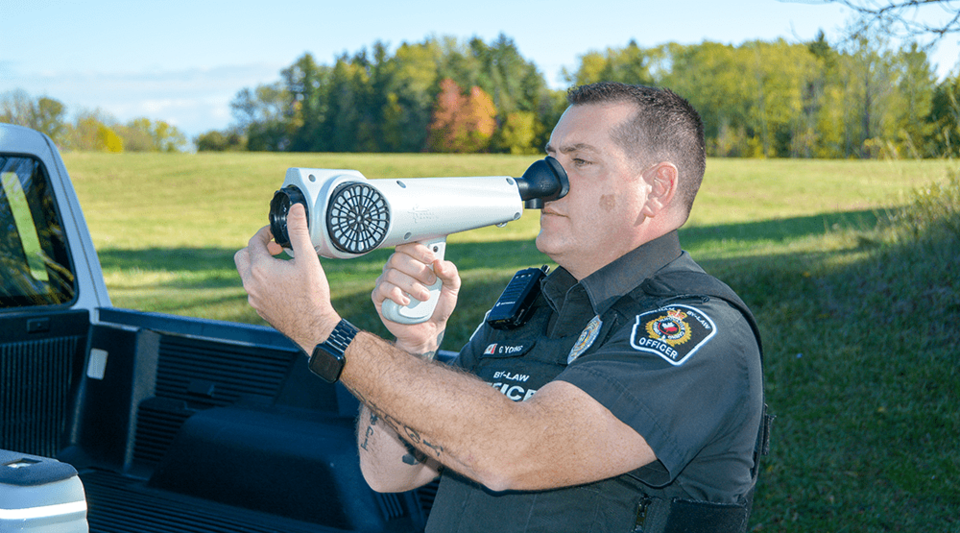Bob Dylan got it right. His 1963 hit “Blowin’ in the Wind” was a protest song, an anthem of the civil rights movement. According to Wikipedia, it was intentionally ambiguous: either the answer is so obvious as to be right in your face, or as intangible as the wind. Think peace, war, freedom.
His ballad can also apply to the Pelham cannabis conundrum. Jobs and restaurant patronage from those grow-op workers, we like. The skunky smell which overwhelms fragrant flower gardens of Fenwick and Fonthill, not so much.
Just ask retired educator David Whitehead, of Kevin Drive.
“When I moved here ten years ago, there were no issues like this,” said Whitehead. “I'm really close to Foss Road [home of the Redecan cannabis factory]. The odour isn’t bad all the time. I often go for a walk around eight o’clock in the morning, and find the smell is really strong, like a family of skunks is living under the porch. By the time I come back from my walk an hour later, the smell is gone.”

There are a number of variables at play, including the direction of the wind, the location of homes relative to a given cannabis operation, the kind of filtration system in place, and the frequency with which the operation vents heat (thus allowing odours to escape).
Whitehead’s frustration prompted a letter to Mayor Marvin Junkin, who replied that Pelham bylaw officers will make prompt investigations once a complaint is lodged, armed with a new device which does an analysis of the strength of the odour. In fact, the pot aroma is randomly monitored at several cannabis sites in Pelham at least three times each week, according to bylaw officer Greg Young. (Craig Genesse is the other bylaw officer who tests for pungent perfume emitted by the cannabis operations.)
The Voice did a ride-along with Young last week, and witnessed the use of the super-sniffer.
The hand-held machine which scans for odour is called the Nasal Ranger, a state-of-the-art tool in the science of field olfactometry. It measures and quantifies odour strength in ambient air, determining scent concentration objectively with its trained nose.
The technology was developed by St. Croix Sensory Inc., of St. Paul, Minnesota. The price tag for such a machine is about $2000 US. The recommended 3.5-hour training seminar, odour sensitivity test kit, and maintenance/calibration fee (recommended annually) tacks on another $1500 US. Both Young and Genesee attended training sessions to master the nuances of the device.
The Nasal Ranger has a filtration system that allows in a tiny amount of ambient air alongside the filtered air, and each subsequent step increases the amount of unfiltered ambient air taken in. The dial setting where the user first smells the problem odour determines the dilution-to-threshold ratio (D/T). Strong smells have a high D/T. A level 2 D/T would be associated with a weak smell, whereas the acceptable threshold for the bylaw officers is a D/T of 6. Anything higher, and the cannabis operation will receive a knock on their door, requesting an explanation as to why the odour level is excessive. A $250 fine could follow, and if the grower was regularly in non-compliance, provincial laws and higher fines could be invoked. Bylaw officers have discretion in such matters.
A web-based application is available with the Nasal Ranger called OdourTrakr, a data-logging tool that stores D/T values for each sample taken, as well as information such as odour characters, sample time, date, and geographical position determined via global position systems (GPS).
Young pulled his Town of Pelham truck over to the side of the road, adjacent to a local cannabis facility. Winds were blowing from the west (which is the prevailing wind direction in Pelham), so Young positioned his vehicle on the east side of the operation. He recorded the date, time, weather conditions (temperature, wind direction and speed), and took a screenshot photo of the facility.
“We actually breathe through the machine to see if we can if we detect the odour,” said Young. “Remember that even if you do smell something in the air, it may not register high enough on Nasal Ranger to be a violation.”
Cannabis operators have been cooperative in the whole monitoring process, said Young.
“They've invited us to their properties to do random testing, and indicate to us that they want to work with us and the community.”
On this day, no odour readings at any the three cannabis operations visited were in excess of a D/T of 6, and thus no violations were recorded.
What about neighbours cultivating pot in subdivisions?
“Federal legislation allows residents to grow up to four plants for personal use. That’s the law. Not much we can do about it,” said Young. “There is no onus on residents to control the odour that may be emitted by their outdoor plants.”
Of course, if that neighbor has a dozen plants on his side of the fence, and has no license to produce cannabis for commercial or medical purposes, he is in violation of the law, and subject to prosecution by the police.
Something not smelling right? To lodge a complaint and request an odour measurement, residents are asked to use the “Report a Problem” link on the Town’s website at www.pelham.ca



